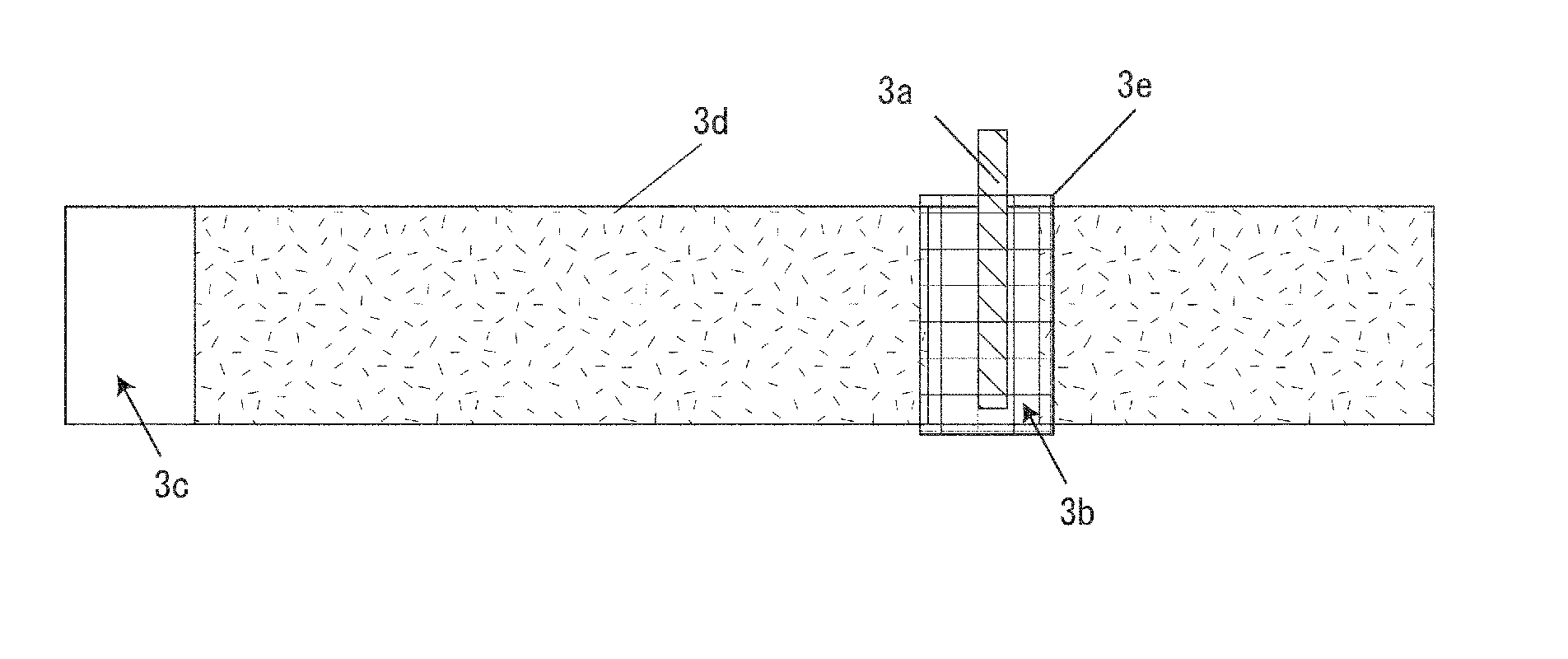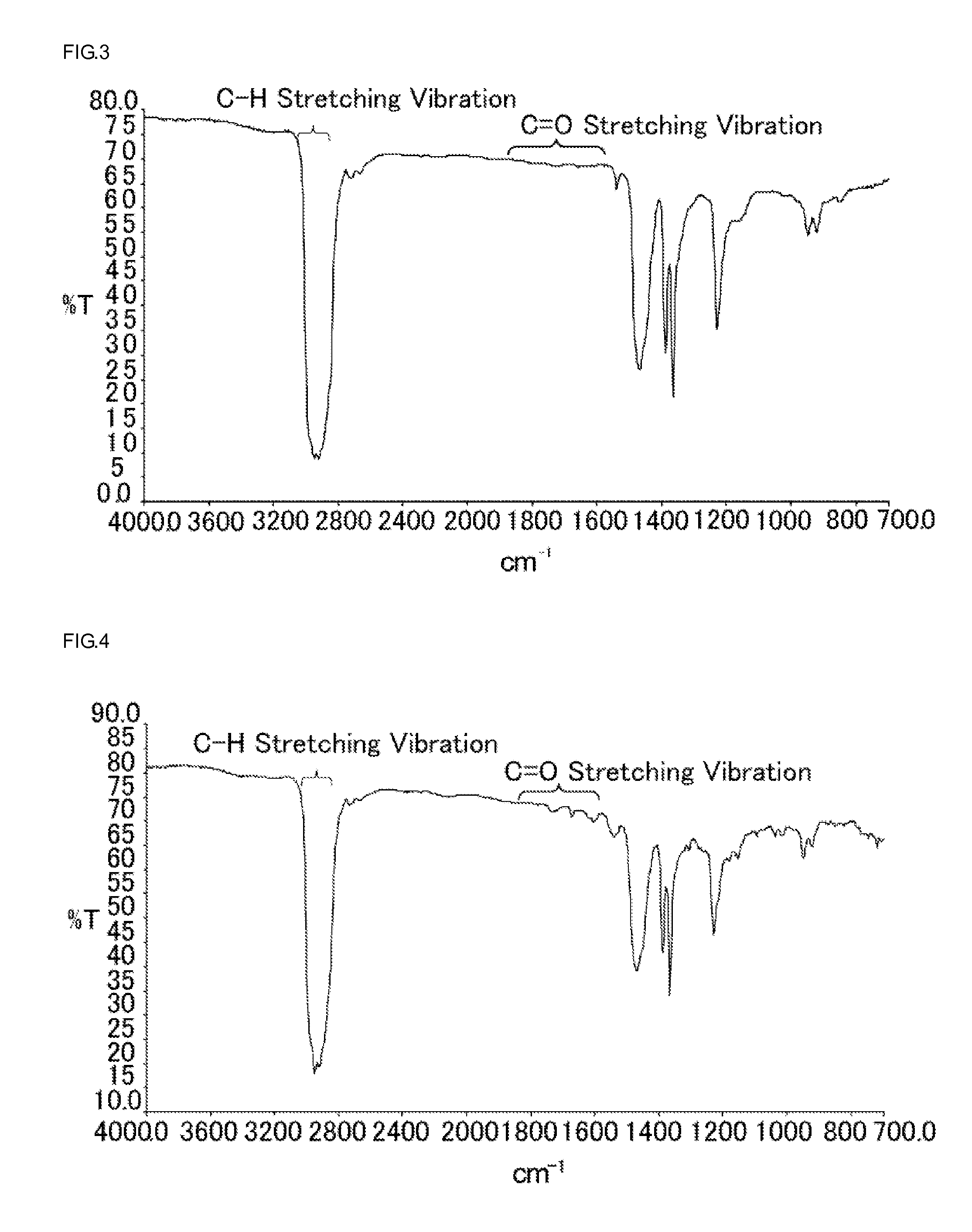Non-aqueous electrolyte secondary cell
a secondary cell, non-aqueous electrolyte technology, applied in the direction of cell components, final product manufacturing, sustainable manufacturing/processing, etc., can solve the problems of affecting cell characteristics, deteriorating storage characteristics of cells, and significant reduction of cell pack performan
- Summary
- Abstract
- Description
- Claims
- Application Information
AI Technical Summary
Benefits of technology
Problems solved by technology
Method used
Image
Examples
embodiment
[0048]With reference to FIG. 1, the cell according to Embodiment is explained. FIG. 1 shows a perspective view of a dismantled cross-sectional area in the cell of the present invention, and FIG. 2 is a diagram showing the positive electrode where the positive electrode current collector tab is attached and the insulation adhesive tape is applied.
[0049]As shown in FIG. 1, in the cell according to the invention, an electrode assembly 2 comprising a separator 5, a positive electrode 3 and a negative electrode 4 is inserted into a cylindrical outer can 1. The opening of the outer can 1 is sealed by a sealing body 6. A negative electrode 4 is electrically connected to the outer can 1 via a negative electrode current collector tab 4a, while a positive electrode 3 is electrically connected to the sealing body 6 via a positive electrode current collector tab 3a. In a word, the outer can 1 also serves as a negative external terminal, and the sealing body 6 also serves as a positive external ...
example 1
Preparation of Positive Electrode
[0056]Lithium cobalt composite oxide as a positive electrode active material, acetylene black as a conductive agent and polyvinylidene fluoride as a binder were mixed in a mass ratio of 90:5:5. Then, the resulting mixture was dispersed in N-methylpyrrolidone as a solvent to form a positive electrode active material slurry. This slurry was applied on a positive electrode core made of aluminum foil with 15 μm thickness to prepare a positive electrode active material layer 3d including core exposed portions 3b and 3c. Thereafter, the resulting product was dried, rolled and cut to a desired size. Then, a positive electrode collector tab 3a was attached to the core exposed portion 3b of the middle portion, and further the above Tape 1 as an insulation adhesive tape 3e was applied on the positive electrode collector tab as shown in FIG. 2, thus preparing a positive electrode 3. This insulating tape was 2.7 mm higher and 2.5 mm wider than the core exposed p...
reference example 1
[0063]A non-aqueous electrolyte secondary cell according to Reference Example 1 was fabricated in a similar way to Example 1 except that the insulating adhesive tape was not applied.
(Storage Test in Charged State)
[0064]For each of Example 1, Comparative Examples 1 and 2, and Reference Example 1, two hundred non-aqueous electrolyte secondary cells were fabricated. Next, these cells were charged at a constant current of 0.7 It (1750 mA) to a voltage of 4.2V, and then charged at a constant voltage to a current of 0.02 It (50 mA). Then, the voltages of these cells were measured at 25° C. Thereafter, these cells were discharged at a constant current of 1.0 It (2500 mA) to a voltage to 3.0V, and the discharge capacity in this point (initial capacity) was measured.
[0065]Thereafter, these cells were charged at a constant current of 0.7 It (1750 mA) to a voltage of 4.2V, and then charged at a constant voltage to a current of 0.02 It (50 mA). After this, half of the cells (100 each) were stor...
PUM
| Property | Measurement | Unit |
|---|---|---|
| Fraction | aaaaa | aaaaa |
| Fraction | aaaaa | aaaaa |
| Fraction | aaaaa | aaaaa |
Abstract
Description
Claims
Application Information
 Login to View More
Login to View More - R&D
- Intellectual Property
- Life Sciences
- Materials
- Tech Scout
- Unparalleled Data Quality
- Higher Quality Content
- 60% Fewer Hallucinations
Browse by: Latest US Patents, China's latest patents, Technical Efficacy Thesaurus, Application Domain, Technology Topic, Popular Technical Reports.
© 2025 PatSnap. All rights reserved.Legal|Privacy policy|Modern Slavery Act Transparency Statement|Sitemap|About US| Contact US: help@patsnap.com



